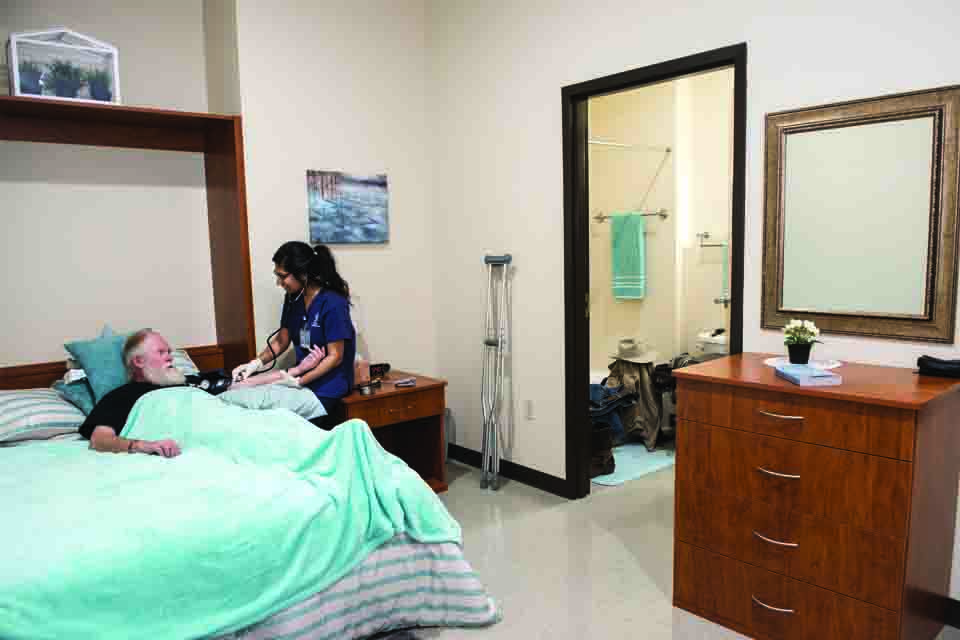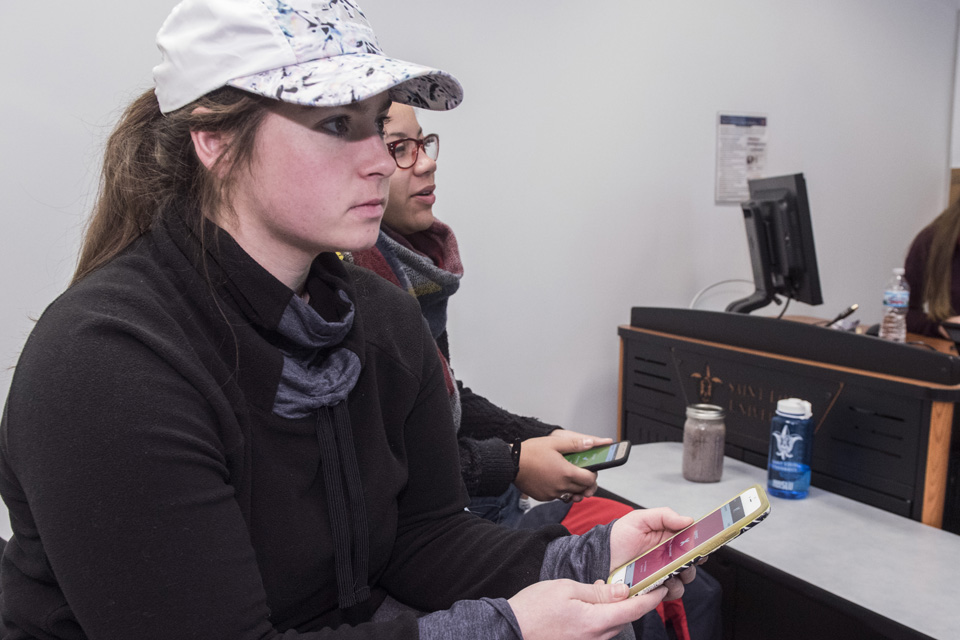The Technology Evolution
When Margaret Bultas, Ph.D., R.N., C.N.E., C.N.L., C.P.N.P.-P.C., attended nursing school in the late 1980s, her academic experience centered on, rather than around, memorizing details, learning about resources and understanding the profession through traditional classroom lectures and printed textbooks.
For today’s nursing students, however, much of that information is readily accessible on any computer or handheld device at any time. “Because technology is so prevalent today, I don’t spend my time teaching facts and figures anymore,” said Bultas, associate professor. Instead, I teach how to effectively communicate and work with people.” At the same time, the information requirements of nursing have expanded exponentially. “There’s so much to know, it’s impossible to memorize it all,” she said. “so technology resources allow us to focus on learning how to think, reason and problem solve.”
Though printed textbooks are still foundational teaching tools, they are often accompanied by online resources, including videos, quizzes and supporting materials. Combined with the barrage of information available on the internet, Bultas believes today’s students need guidance on how to effectively analyze and evaluate information sources to ensure they are credible and valuable. “Students are bombarded by so many choices and they don’t know where to focus,” she said. “My biggest job is to teach them how to find the most appropriate resources and make the most appropriate decisions.”
The dramatic shifts in nursing education over the last several decades also have been informed by a better understanding of how the brain works, according to Debra Rudder Lohe, Ph.D., director of the Paul C. Reinert, S.J. Center for Transformative Teaching and Learning at SLU. “Shifts in technology don’t happen in a vacuum,” she said. “With functional MRIs and other advancements in brain research, we’ve learned some things about what happens when people learn, which has influenced pedagogical trends.” Other societal shifts that have influenced the evolution of teaching include changing parenting styles, generational trends, an increase in learning disability diagnosis rates, and a shift in higher education accreditation and accountability standards.
Equipping Today's Nurses
By replicating real-world scenarios, technology helps equip nursing students for their professional careers. “Increasingly sophisticated simulations create authentic real-time scenarios, with unexpected variables that challenge students to think on their feet,” said Lohe. Exciting as these applications are, she believes the technology that has influenced learning the most is a much less obvious one. “In some ways, I think one of the most revolutionary technologies in formal classrooms are movable tables and chairs instead of anchored lecture-hall seating,” Lohe said. “It’s very difficult for students to interact with each other when they can only see the backs of each other’s heads and can’t huddle up in small groups.”

Classroom flexibility has also improved accessibility for students with physical disabilities and different learning styles. And flexibility in how curriculum is delivered has improved access to education for those who are located elsewhere. “The SON has one of the oldest online nursing programs in the country,” Lohe said. “Correspondence courses have existed for a long time, but digital technology—the ability to log into a computer and engage with teachers and students who may be located anywhere in the world—creates meaningful engagement.”
Flipping the Classroom
Technology has also shaped new instructional strategies, including an academic model commonly known as “flipping the classroom.” This approach, which originated in K-12 learning environments, involves reversing the traditional learning experience. During class time, students engage in active learning, rather than primarily listening to lectures. They study course material outside of class, guided by pre-recorded video or audio lectures and readings.
It’s a strategy embraced by Assistant Professor Bobbi Shatto, Ph.D., MSN, RN, CNL Nursing, in the foundational course in medical-surgical nursing. The 8 a.m. class begins with an interactive game using a smartphone app, followed by a 20-minute review of course materials by Shatto. The balance of the four-hour class involves a series of interactive group projects and other activities. “During class, I may ask a student to call a nurse practitioner to get orders, so they’re applying the knowledge they learned in class and practicing what they will be doing in a hospital environment,” she said. “It’s like a live, unfolding case study.”
Because students actively participate in every class, Shatto is also able to identify which ones may be struggling to understand certain concepts so she can work with them individually. Since incorporating new teaching techniques throughout the SON curriculum, scores on the standardized HESI Predictor Examination have risen dramatically. And SLU boasted a 96 percent pass rate on the NCLEX exam in 2017, far above the national and state of Missouri averages.
In many ways, nurses must remain at the forefront of technology to effectively practice within a constantly evolving digital infrastructure that includes electronic medical records, telemedicine, artificial intelligence, virtual reality and augmented reality. “Nurses are constantly looking for better ways to do things, and our training tells us to look to the evidence and not just do things the way we’ve always done them,” Bultas said.
Founded in 1928, Saint Louis University Trudy Busch Valentine School of Nursing has achieved a national reputation for its innovative and pioneering programs. Offering bachelor's, master's, and doctoral nursing programs, its faculty members are nationally recognized for their teaching, research and clinical expertise.
